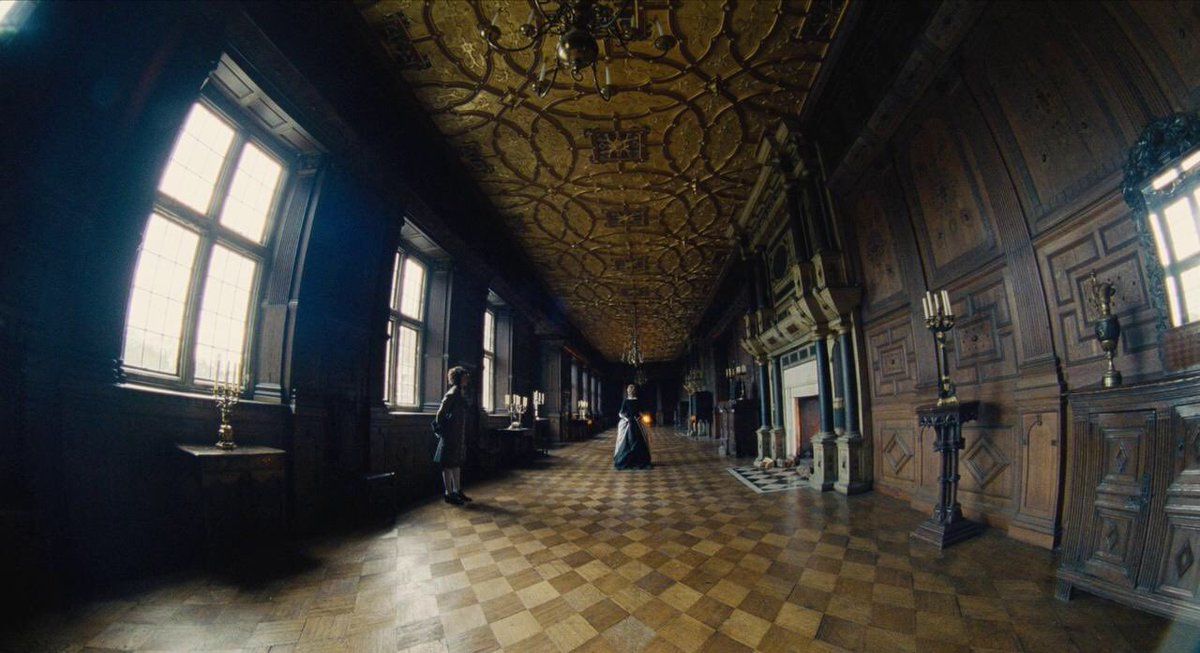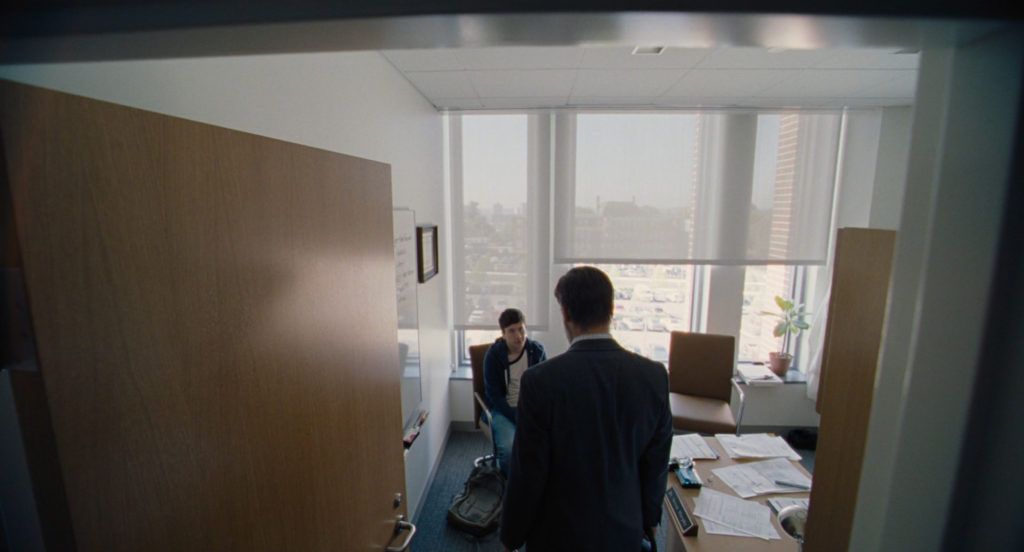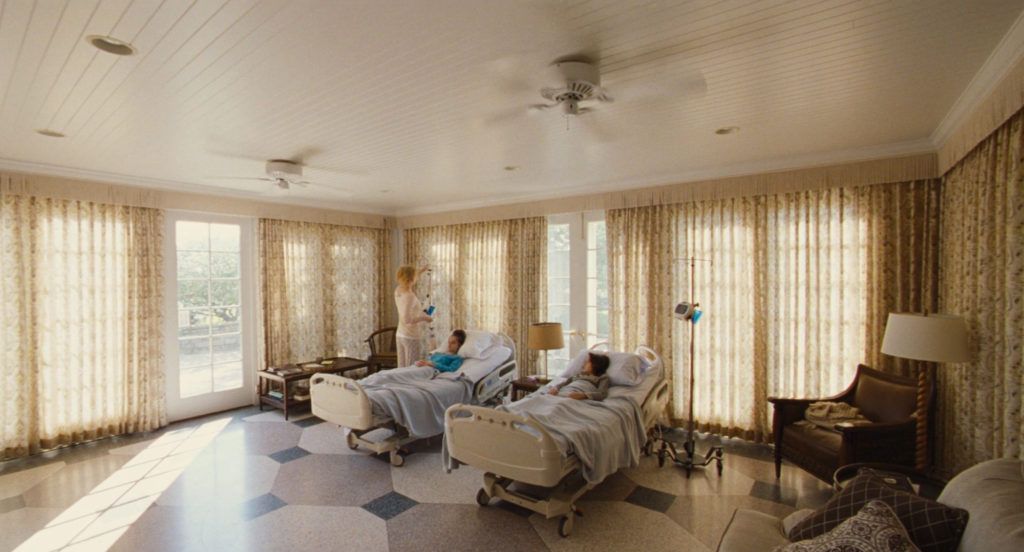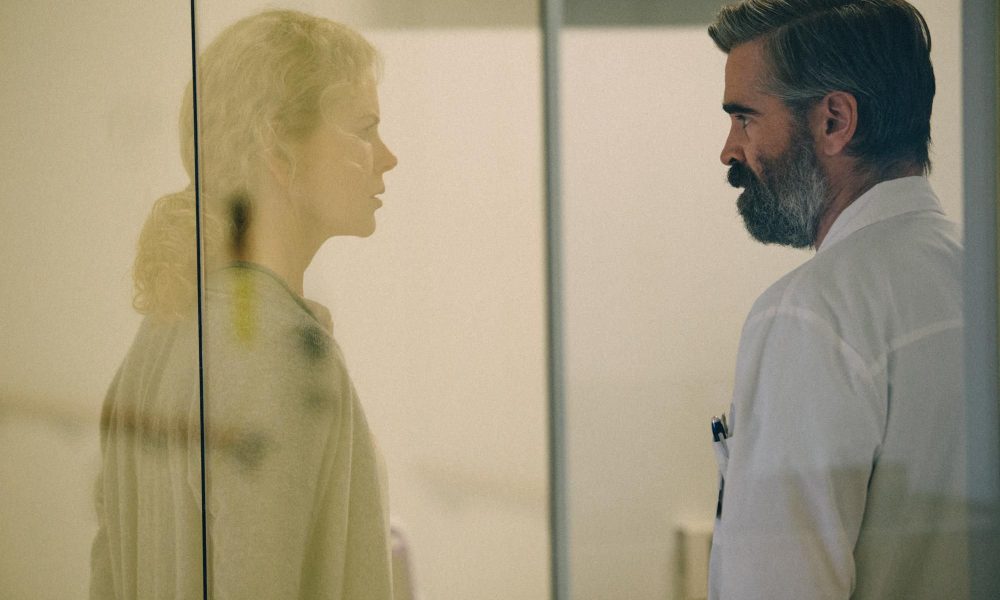The Master of Dystopian Cinema: Yorgos Lanthimos
There is a lot of controversy about the art house cinema, but today we will talk about its brightest and most daring representative, Yorgos Lanthimos.


Art by @nadi_bulochka
Greek cinema is often overlooked, and completely undeservedly so, as one of the most unique and underrated directors of our time, Yorgos Lanthimos, proves. Today we want to find out if he is justifiably called a pretentious upstart or an individual author who is not afraid to open up familiar themes in a new way.
Disclaimer: our blog has no academic purpose behind it, because we are viewers just like you. Filmustage does not aim to educate, but to gather a close-knit film community around us. We can be wrong about certain statements - and that is fine. We are open to discussion and criticism. The main thing is to love cinema and talk about it.
Ready to craft your own cinematic masterpiece?
Let Filmustage streamline your pre-production!
A Brief Biographical Sketch
Yorgos Lanthimos was born in Athens, Greece. The director received his professional education at the Stavrakos Film School. Already in the mid-90s, he made his first feature short film entitled "O viasmos tis Hlois". At the same time, Lanthimos was creating theatrical productions, shooting music videos and commercials. In the early 2000's he was part of the creative team responsible for the staging of the opening and closing ceremonies of the 2004 Olympic Games in Athens. During this work, Lanthimos met Athina Rachel Tsangari, who later became his permanent producer.
In 2009, Yorgos Lanthimos directed "Dogtooth", which won Un Certain Regard at the Cannes Film Festival and was nominated for an Oscar in the Best Foreign Language Film category. On January 22, 2019, he was nominated for an Oscar for Best Director for his film "The Favourite".
What's Inside Yorgos Lanthimos' Films?
Each new film by the director has the same goal, namely to create a synthetic dystopia that broadcasts the idea of absurdity and unnaturalness. Lanthimos gives no characterization or premise, but simply leaves the viewer with his dystopian fantasies as they are. The point is not to verbalize the mythology of the film, but to portray it contextually. The world around, as well as the inner world of the characters, lacks color, detail, and personality. Yorgos Lanthimos presents the fictional world in the form of large empty spaces with a minimum of scenery. Therefore, although the viewer is unlikely to understand the story structure of "The Lobster" (2015) and "Dogtooth" (2009), you can definitely feel the massive pressure on the characters.


Shots from the "Dogtooth" (right) and "The Lobster" (left)
For example, the characters interact with each other in an extremely straightforward way, completely oblivious to the madness surrounding them. More often than not, they say what they think and are not shy about directly expressing even the frankest desires. Especially, this contrast between context and characters is noticeable in "The Killing of a Sacred Deer" (2017), which probably features one of the most frightening characters, Martin. At some point in watching the film, one really gets uncomfortable simply because Martin is too straightforward and too sincere. He is simply too out of touch with the overall atmosphere in film, where absolutely all events seem predetermined and every word instinctive. Lanthimos gives the audience time to get used to the absurdity of the film, to get used to the authoritative figure of Dr. Stephen Murphy, who has everything: family, career, and recognition. With the appearance of Martin, who ends up being a metaphorical representation of either an angel or a devil, this prearranged order crumbles and exposes the vices of Stephen and his family. This is why Yorgos Lanthimos' films are so discomforting to watch: they simultaneously force us to immerse ourselves in a fantasy where the prearranged order is foregone, while also happily showing what happens to the one who breaks the order of things.
It is worth noting how physically restrained the characters are. This motif, particularly of intimate life, is emphasized several times in Lanthimos' cinematography. Though the characters broadcast what they think, their body language suggests stiffness and closure. Only at some moments does the Greek director let the characters' feelings escape, as in the loner community dance scene from "The Lobster" (2015), where people dance alone because community rules forbid any contact with each other.
Perhaps the one that stands out is "The Favourite" (2018), in which the Greek director dispensed with anti-utopian ideas and mocked the medieval aristocracy in full grotesque humor. In any case, all of Lanthimos' films definitely have one thing in common, which is what gives his cinema its individuality.
Visual Style
Yorgos Lanthimos' camerawork gives his films a recognizable tone. After all, his films are not overflowing with constant dialogue, which leaves room for visual imagery.
Wide Angle Shots
You can be sure that Lanthimos is one of the biggest fans of wide angle optics among directors. In every one of his films, you can find at least one shot made with wide angle lenses (check the Lenses as an artist's instrument).






Examples from "The Favourite" (on the top) and "The Killing of a Sacred Deer" (on the bottom)
Probably the easiest way to create a mood of abnormality from the very beginning of the picture is by geometric distortion in the frame. Among other things, this picture has another purpose: as we have already said, Lanthimos has a way of depicting emptiness through volume, to convey the detachment of the film's characters. In this way, an absurd atmosphere is created, because the viewer immediately understands - a person in such an environment looks unnatural.
High Angle Shot
This visual feature stands alongside the wide-angle shots because the director not only seeks to isolate the characters from the setting but also to remove the viewer from what is happening.



High angle shots from the "The Killing of a Sacred Deer"
By placing the viewer's gaze above the protagonists, Lanthimos endows us with what is known as a god's point of view (you may also be interested in reading Camera angles - explained). Through this technique, the director makes the characters small and as if placing them under constant surveillance, symbolically depicting the predestination of their fate.
It is fair to say that it is mainly the director's visual tricks that create suspense in films. The compositional arrangement, as well as the distortion, allows us to understand that an ending is already prepared for the characters, but we can't anticipate it. The only thing left for the viewer is to wait in suspense for the denouement.
Cinematic Zoom
There are two types of zoom, which, at first sight, differ only in the realization, but you can really find contrasting senses. So, the dolly zoom is a physical zoom in order to highlight or emphasize an object/subject. Zoom in, on the other hand, is realized optically or digitally throught the editing software. The essence is the same, but you can definitely feel the difference (we also wrote more about this in Essential camera movements - explained).
Lanthimos uses zoom in as a fixation on a particular object, while dolly zoom seeks to build an emotional connection in the viewer between the character and the objects in the frame. The point is that the physical zoom in feels more natural to a person because it contains a real change of proportions (the closer the camera, the larger the object). Approximately the same way our eye works. On the other hand, zoom-in does not change the proportions, simply pushing the excess out of the frame. Accordingly, this fixing approximation literally imitates the gaze of a lifeless higher power, which does not leave its characters for a moment.

Agree, it is impossible not to feel the anxiety of these shots. Interestingly, the reverse zoom out occurs very rarely, as in the very beginning of the film. We slowly recoil from the beating heart until we realize that it is actually dying. This contrast suggests that zoom in is precisely the harbinger of the end, with the viewer being asked only one question: are you ready?
Afterword
We have seen many opinions that Yorgos Lanthimos is just a pretentious director who operates with the techniques of arthouse cinema only to cement a certain image for himself. We disagree with this statement, however. Lanthimos creates absurdity out of nothing but tries to raise existential questions on human existence, the price of love, and life. His films cannot be called a thriller, a satire, or even an anti-utopia - it is a tragedy to which the Greek director applies a combination of the ridiculous and the terrible. Thanks to this ingenuity, his pictures can be called accessible, because they don't relish familiar statements, but raise them from a completely different perspective. This is a director whose work will have to be examined and, if you are interested in it, we highly recommend that you familiarize yourself with his cinematography.
From Breakdown to Budget in Clicks
Save time, cut costs, and let Filmustage’s AI handle the heavy lifting — all in a single day.